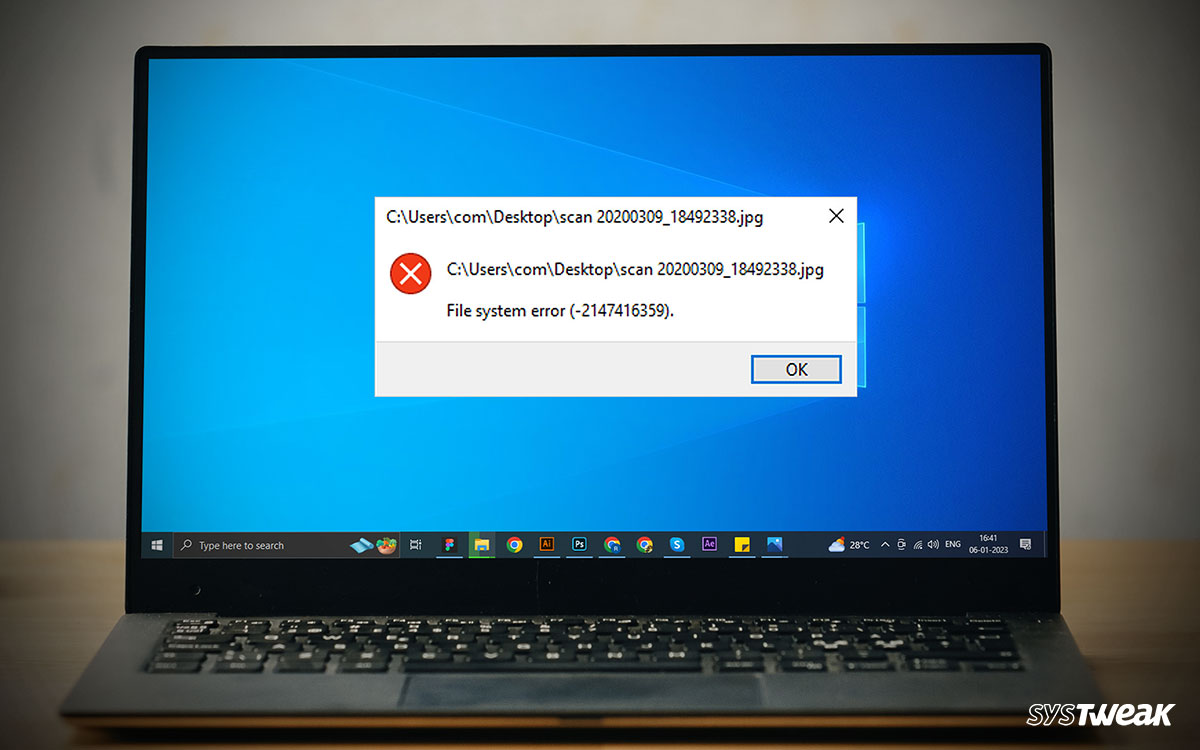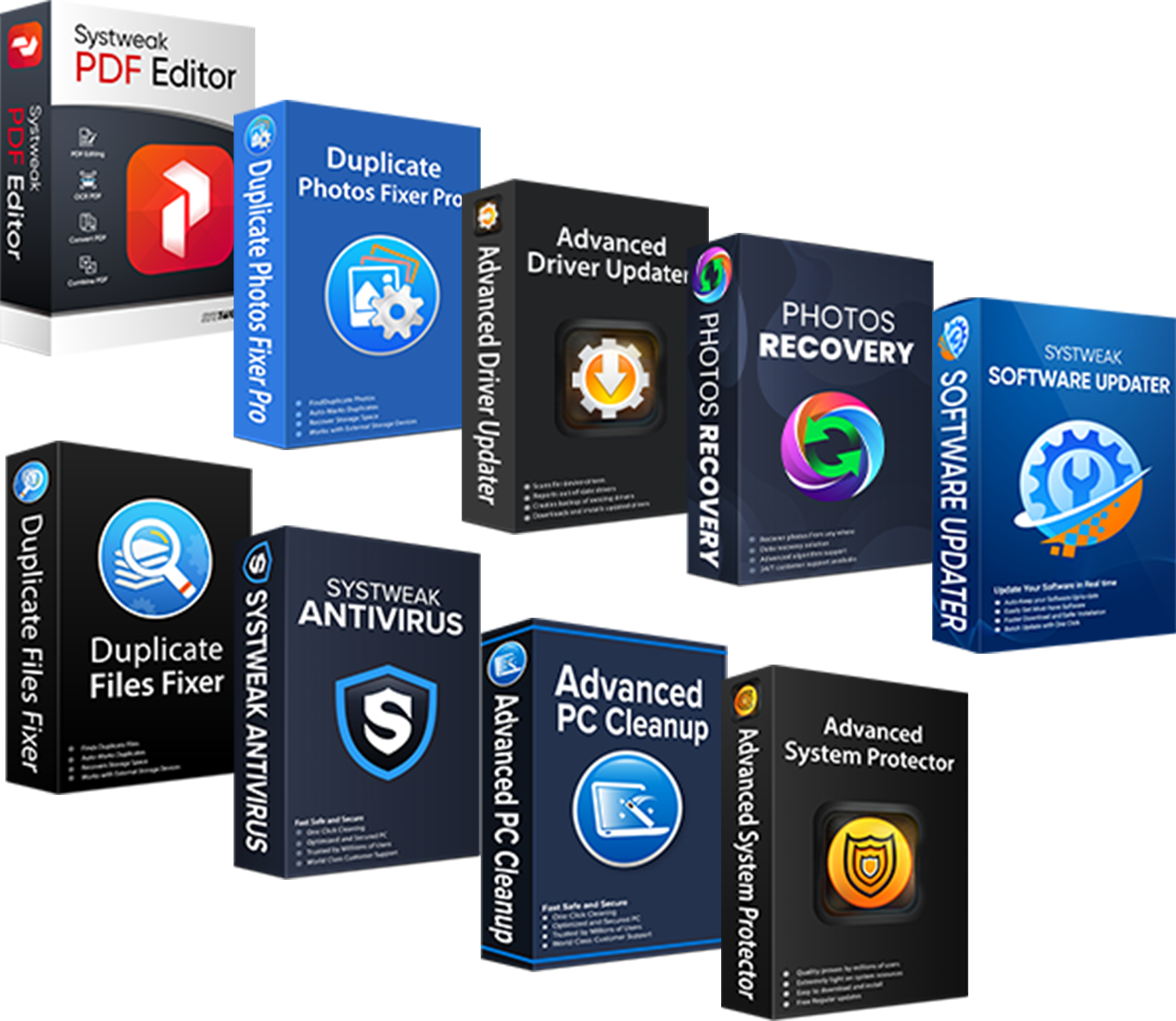When you use a PC more often, the chances of storage drives getting affected are higher. This high usage can cause wear and tear, leading to different types of errors considered as file system errors.
50% OFF

BLACK FRIDAY OFFERS
Unlock Black Friday Mega Savings — Systweak Tools FLAT 50% OFF!
While they seem just another Windows error, they are more than that. File system errors can cause serious problems with your computer’s storage and processing. Some of the issues you may encounter because of it are: –
- Facing issues in accessing your crucial files and documents.
- Degraded PC’s performance and user experience.
- Slow read and write speed, resulting in compromised performance.
Hence, eradicating system file errors is the best way to keep your PC performance glitch-free.
But how can these errors be fixed? Well, they can be fixed using the best PC cleanup tool like Advanced System Optimizer. However, before we learn how to use the tool, it is important to learn more about file system errors.
What are File System Errors?
File system errors are fatal for Windows, and they can interrupt basic yet crucial processes on your PC. Moreover, they are displayed with the following codes, and each refers to the corresponding error –
- File System Error (2018375670) – Related too Bad Sectors on a Disk or its integrity.
- File System Error (1073741819) – Refers to an error with registries of your PC’s UAC account settings or corrupt system files.
- File System Error (2147219196) – Occur due to an error with the Universal Windows Platform on your PC.
Though the above errors are different, they have one thing in common: corrupt files and registries. And it happens when your disk drive is overused. Moreover, they can bother you as they often prevent you from carrying out important processes.
Luckily, there’s nothing to worry as in this blog, we will learn how to rectify file system errors.
3 Effective Ways to Fix File System Errors on Windows
Now that you are aware of the different file system errors and their reasons, let’s look at ways to fix them.
Let’s begin!
Fix 1 – Run a Disk Check
To check for disk errors, Windows give the option of disk check. What it does is, it scans your hard drive for errors and looks for ways to fix them. Check Disk utility is important as it can also help in managing hard disk health and maintenance factors on your PC.
To initiate this check disk process, all you have to do is –
Step 1 – Open your Command Prompt window with Administrator rights. The best way to do it is by searching for the program in the start menu and running it as administrator.

Step 2 – In the Command Prompt Window, use the command chkdsk c: /f and then hit enter.
C is the drive letter where Windows is installed. If you have Windows installed on some other partition, please replace the driver letter.
Step 3 – This will initiate the check disk utility on your PC. it will start scanning the drive you mentioned and eventually yield results.

However, if you want to scan the drive currently in use, it will allow you to schedule the scan on reboot. Press Y to schedule the scan.
Once you restart your computer, you will find an automated disk check running. Make sure you do not press any key on your keyboard as it might postpone the scan for the next time. When your PC turns on, the issue should be fixed. Check the process that was causing the error to ensure.
If the check disk utility cannot fix your error, move on to the next fix.
Fix 2 – System File Checker & DISM
Both are utility tools on Windows& work best when deployed together.
If the issue is related to corrupt files, running the SFC is enough to fix it. However, to be sure, the second step is to deploy the Deployment Image Servicing and Management tool, or DISM command.
To run these tools, follow these steps –
- Open your Windows Command Prompt with Administrator rights using your start menu search option. You can also use Windows + X as a shortcut to find it in the quick-access menu.
- In the Command Prompt first, use the sfc command. Type sfc/scannow in the command prompt and hit enter.

- This will initiate the scan. You can minimize the command prompt window while the scan is running, as it may take some time to finish.
If any errors are detected they will be automatically fixed. However, even after that if the issue persists, run the DISM command. It will find the corrupt files and replace them with the help of Windows Updates. Here’s how you initiate DISM.
- In the command prompt window, type the following commands and hit enter after each of them.
Dism /Online /Cleanup-Image /CheckHealth
Dism /Online /Cleanup-Image /ScanHealth
Dism /Online /Cleanup-Image /RestoreHealth

- After entering these commands, wait for DISM to run and fix the issue.
- Once the process has ended, reboot your PC.
After restarting, go to the same process showing the error to check if it was fixed. Usually, it fixes every file system error on the PC. However, if that didn’t work, move on to the third fix!
Fix 3 – Use Disk Tools by Advanced System Optimizer
Advanced System Optimizer is an allrounder in troubleshooting and fixing PC errors. It can help with system file errors. The tool provides a dedicated pool of resources to handle your disk-related errors.
Here’s how you can fix file system errors using Advanced System Optimizer –
- Download the application (button below) and install it on your PC if you do not have it already.
- Run the application, and from the left panel, click on Disk Cleaner and Optimizers.

- You’ll find the Disk Tools option in the list. Click on it to find more tools to fix your problem.

- In the Disk Tools option, you’ll find a scan now option. Click on it to simply examine your hard disk for errors. It will also fix the issues when it finds them and gives you an overall summary of what happened.

- When you click on Scan now, you will find a pop-up asking you to choose the type of analysis. If you have tried the first two fixes and haven’t gotten your solution, I suggest you opt for a Thorough analysis. Though if you are working on something important and prefer not to restart your PC, use the Normal analysis.

- You can also refer to the descriptions of the scan modes for reference. Once you have chosen, click on scan now to initiate the process.
- Remember that if you only have one partition and want to run the scan, you may need to schedule it for a reboot, as it cannot scan your drive when it’s in use.
- Give the process some time to finish. As soon as it finishes, check for the issue to confirm it is resolved.
The tool has many benefits, as you can also use it to run disk cleanup on your Windows PC. However, the best one is its accessibility and functionality. Even basic PC users can make the most out of the tool.
Fix File System Errors in No Time!
These three are the best ways to resolve file system problems on your Windows PC. If you don’t have a lot of time or don’t want to go the manual route, I suggest you download the Advanced Driver Updater and let the tool do all the work for you.
File system errors can be difficult to spot and fix. I hope these fixes get the job done for you. In the comments, let me know the best fix for daily system errors from the three listed. That also brings us to the end of this post. Good luck!
Recommended-
How to Restore System Files on Windows 10
How To Backup & Restore Windows 10 System Files
How to Recover Deleted Files- 2023 Guide
How to Password Protect Files on Windows 11





